
Of the many substitutes for wheat flour, ground almonds are among the easiest to use. Ground almonds make almond meal and almond flour, which are both easily substituted for flour in cookies. By making almond meal and flour at home, you can look forward to delicious flour-free cookies that are simple to make.
Making Almond Meal From Ground Almonds
Both almond meal and almond flour are made from ground almonds. You can make either in your kitchen. To make almond meal, grind almonds in your food processor until it resembles wheat flour. Carefully sift the almond meal two or three times to remove the any larger almond chunks that the processor may have missed. Use 1/4 pound of whole nuts to make 1 cup of almond meal.
Homemade Fine-Grain Almond Flour
Some recipes work better when you use almond flour rather than almond meal because it is a lighter product. To make almond flour, blanch your almonds before grinding them in the food processor. Blanching the almonds will allow you to remove the skins, making the end result a finely ground powder. Boil the almonds for no longer than 60 seconds, rinse, and then squeeze each almond so the meat slides out of the skin. About 1/4 pound of whole nuts makes 1 cup of almond flour.
Using Ground Almonds in Baking
Almond meal is coarser than almond flour, so take that into consideration when deciding which to use for cookies. Almond meal should be used for heartier cookies, such as oatmeal raisin cookies. Lighter, more delicate cookies, like sugar cookies, should be made using almond flour. Because almond flour is made from blanched almonds, it has a finer grain that is more consistent with wheat flour. When substituting almond flour or meal for wheat flour, do so at a 1-to-1 ratio.
Proceed With Caution
Ground almonds, when used as almond meal or almond flour in baking, are highly versatile. Although you may think you can use ground almonds in every cookie recipe, this is not the case. If your recipe calls for baking powder or baking soda, then a substitute of ground almonds for flour is a seamless switch. Although yeast cookies aren’t as common, pay careful attention to your recipe. If your cookies call for yeast as leavening, don't use ground almonds.
Related Articles
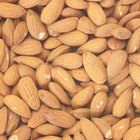
How to Grind Almonds for Baking

How to Grind Almonds for Baking

What Are Blanched Vs. Unblanched ...

Can I Substitute Rolled Oats for Flour ...

How to Make Pistachio Flour

Can I Use Rolled Oats in Place of ...

How to Bake Chicken With Almond Flour

The Shelf Life of Almond Paste

How to Make Sugared Almonds
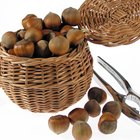
How to Eat Hazelnuts
How to Roast Raw Cashews

Shortbread Cookie Recipe
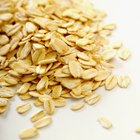
Can You Substitute Quick Cook Oats for ...

What Would You Use Coconut Flour In?

How to Store Coconut Macaroons After ...
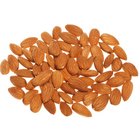
How to Cook Raw Almonds
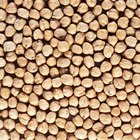
How to Roast Chickpea Flour

How to Bake With Besan Flour

How to Substitute Cornstarch for ...

How to Make Salted Mixed Nuts
References
Resources
Writer Bio
Meg Winkler began professionally writing in 2008. She has covered a variety of topics including fine wine, interiors, the arts, lifestyle and history. Winkler has been a luxury publications editor and music critic. She is an independent author and holds a Master of Arts from American Military University.
Photo Credits
George Doyle/Stockbyte/Getty Images